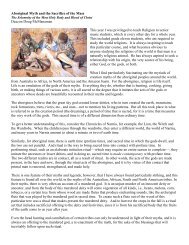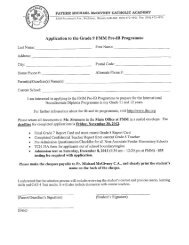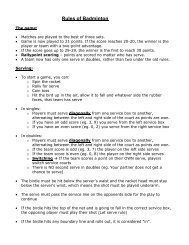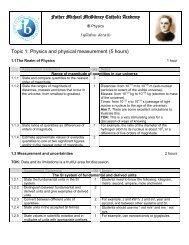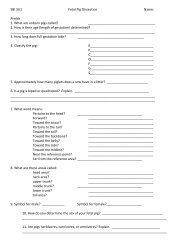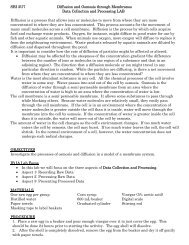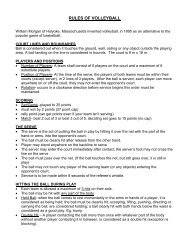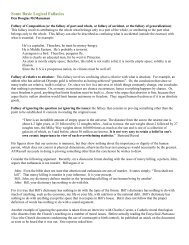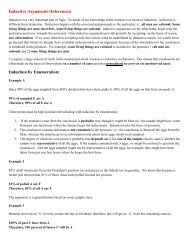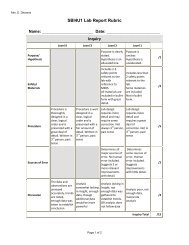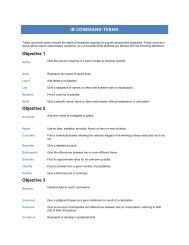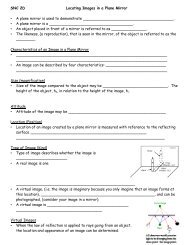Flame Test Lab.pdf
Flame Test Lab.pdf
Flame Test Lab.pdf
Create successful ePaper yourself
Turn your PDF publications into a flip-book with our unique Google optimized e-Paper software.
Mrs. E. Dharmai<br />
SCH3U1 <strong>Flame</strong> <strong>Test</strong> <strong>Lab</strong><br />
Each element has a unique line spectrum. We can use these fingerprints to determine metals<br />
present in unknown metallic compounds. <strong>Flame</strong> tests are used to do so. When an unknown<br />
sample is heated, the resulting flame colour can be compared to a chart of known flame<br />
colours.<br />
<strong>Flame</strong> <strong>Test</strong>: a diagnostic technique in which a metallic compound is placed in a flame and the<br />
colour produced is used to identify the metal in the compound.<br />
This lab will be conducted in 2 parts:<br />
a) Creating a flame test key from known metallic compounds<br />
b) Identifying an unknown metal in a compound by using the flame test key<br />
Materials:<br />
<br />
<br />
<br />
<br />
<br />
<br />
Goggles<br />
Nichrome test wire<br />
<strong>Test</strong> tubes<br />
<strong>Test</strong>‐tube rack<br />
Bunsen burner<br />
Hydrochloric acid,<br />
dilute<br />
<br />
<br />
<br />
<br />
<br />
<br />
Samples of the<br />
following solids:<br />
Sodium chloride<br />
Barium chloride<br />
Calcium chloride<br />
Strontium chloride<br />
Lithium chloride<br />
<br />
<br />
<br />
Potassium chloride<br />
Copper (II) chloride<br />
Various unknown<br />
metallic compounds<br />
Procedure:<br />
Part A: Creating a <strong>Flame</strong> <strong>Test</strong> Key<br />
1. Obtain your solid samples and 5 mL of hydrochloric acid solution.<br />
2. Light the Bunsen burner and adjust it until you get a blue flame.<br />
3. Clean the nichrome wire by dipping it into the hydrochloric acid and then holding the<br />
wire in the flame until the wire adds no colour to the flame.<br />
4. Pick up a small amount of solid sodium nitrate with the wire loop. Hold the end of the<br />
wire in the flame. Record your observations.<br />
5. Clean the wire as in step 3.<br />
6. Repeat steps 4 and 5 with the remaining known samples to complete your flame test<br />
key.<br />
Part B: Identifying Metals in Unknown Metallic Compounds<br />
1. Obtain samples of the unknown metallic compounds.<br />
2. <strong>Test</strong> each sample using the steps 3 and 4 from above. Record your observations and<br />
determine the metal in the unknown samples.
Mrs. E. Dharmai<br />
Discussion<br />
1. Sodium chloride was tested in this lab and produced a specific flame test colour.<br />
a) Describe the colour.<br />
b) Predict the flame test colour if you had tested sodium nitrate. Explain.<br />
2. Why do the compounds have to be heated in the flame first before the coloured light is<br />
emitted?<br />
3. This lab tested several salt compounds that contained a metal and a non‐metal. Is it the<br />
metal or the non‐metal that was responsible for the colour that was produced in the<br />
flame test? Explain.<br />
4. Fireworks come in a variety of beautiful colours. What can you conclude about the<br />
composition of a firework if it displays a red colour upon lighting?



